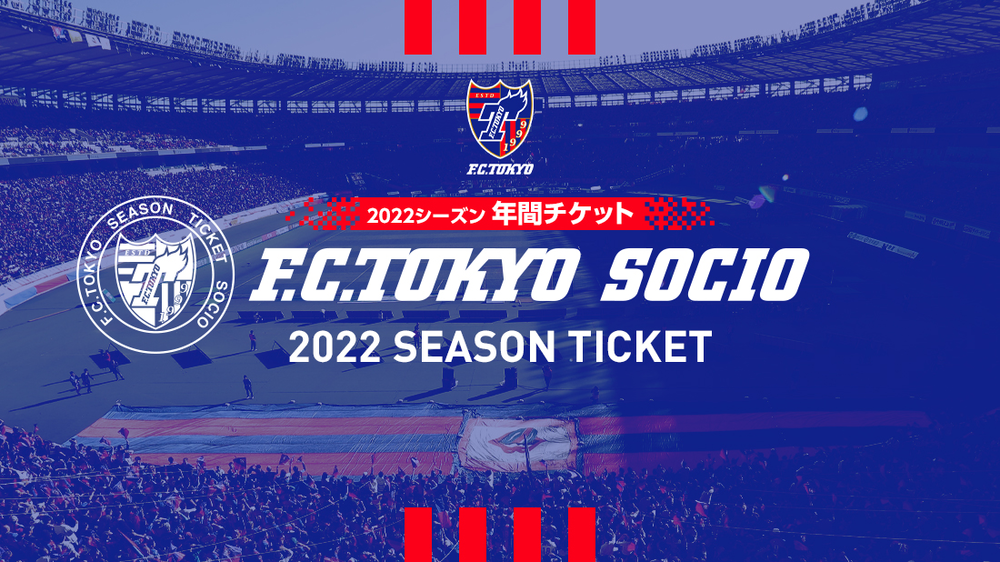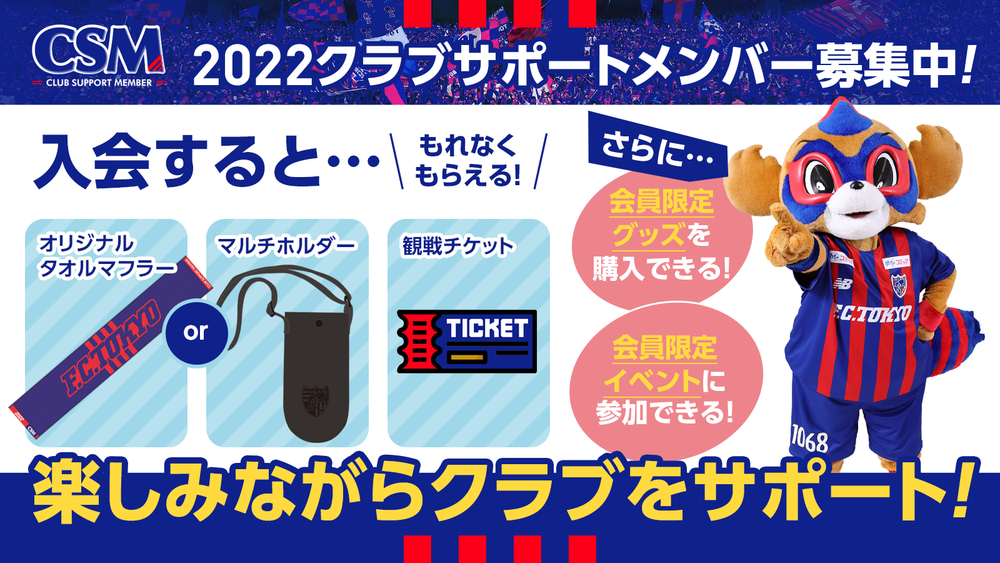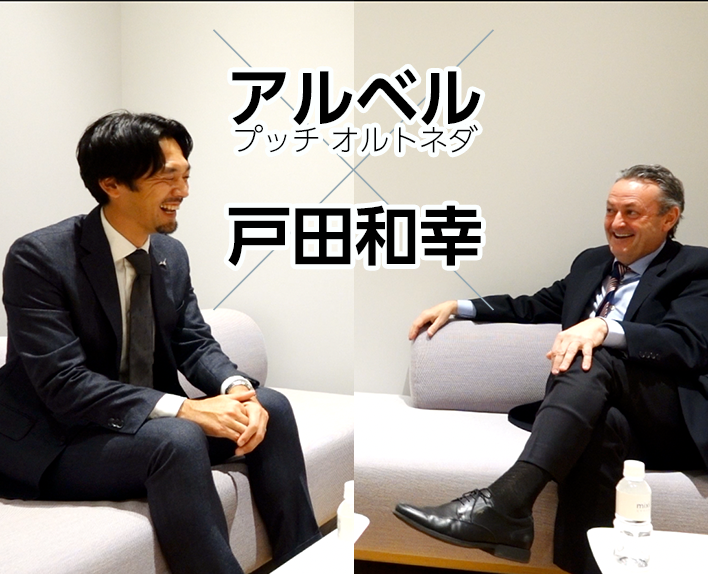Q: Looking back at your professional career, you have steadily stepped up to J1 clubs, starting with Renofa Yamaguchi, JEF United Ichihara Chiba, Sagan Tosu, and now joining FC Tokyo this season.
A, I have always wanted to play in J1 since I am a professional, and my start as a professional was as a training participant at Renofa. From there, I think the result of just recklessly playing and scoring goals has led me to where I am now.
Q: Last season, Sagan Tosu attracted attention by playing collective football. In that, player Yamashita scored 9 goals in the league. I think the evaluation from the surroundings has increased, but I imagine that you were also disappointed with the result of being one step away from double-digit goals.
A, the 2021 season was my first J1 challenge. I didn't know what would happen to myself, but I clearly understood the parts that worked and the parts that didn't work throughout the year. I was very focused on scoring in double digits, so I was honestly disappointed. After the summer, I couldn't extend my 9 goals, but I always thought I would be able to get there someday. However, due to a minor injury and an increase in substitute appearances in the second half, I couldn't reach double digits. Even if I came on as a substitute, as a FW, the result is everything. I personally understand that there is a big difference between 9 goals and 10 goals, so I was really disappointed.
Q: There were also games where you were used alternately with Noriyoshi SAKAI, and there were also times when you started on the bench in the next game after scoring well. Of course, player selection is determined by team tactics and opponents, but did you have any conflicts within yourself?
A, it was there. Honestly, there were times when I wondered "why am I not being used?". However, I pointed the arrow towards myself and understood the parts that were lacking, and for that reason, I made efforts and challenges in practice to be able to be used. However, in the end, it is up to the coach to decide, so I never sulked or neglected practice, and above all, Sagan Tosu is a team that trains with high intensity, so I couldn't let my guard down. When I wasn't starting, I don't know if the expression "frustration" is correct, but I had a vague feeling. However, because other players were also working extremely hard without cutting corners, I was able to have a strong feeling that I couldn't just lose.
Q, Please tell us specifically about the sense of accomplishment and challenges you gained from playing on the J1 stage for the first time.
A, First of all, in terms of the feeling of scoring, I had confidence in scoring when a good ball came, and I think I was able to embody the off-the-ball movement and quick reactions better than the opponent last season. Joining FC Tokyo, I am excited to be able to do more at a stage where one or two levels higher players gather. As for the challenges, even small mistakes can be fatal in J1, and I realized that it is not enough to think "this is good enough". Whether it's post-play, switching defense, or scoring a shot, I think it's a stage where you have to pay attention to the details to make it work.
Q, What were the noticeable differences you felt between J1 and J2 DF?
After competing, J1 defenders firmly connect the ball to their teammates. Even when under pressure, their faces are up, making it difficult to steal the ball. Their attention to detail is impressive. When facing opponents in post-work, they pay close attention to the direction and angle of their traps, as well as their body's center of gravity. In J1, I have lost the ball more often than in J2, and those losses can be fatal. Throughout the season, I have analyzed my opponents and have learned to remember certain things with my body, but I can clearly feel the difference in level.
Q, I think that player Yamashita's strength is not only his strength, but also his smooth reversals and body movements are his weapons.
A, I don't think I'm a skilled player, but the most important thing for me is positioning and off-the-ball situations when I don't have the ball. It's about how I can efficiently move towards the goal. I have to think about what state I will be in when I receive the ball and communicate with my teammates beforehand. I have been working on this aspect very intensively.
Q, Regarding scoring patterns, it seems like there are many types of players who can score, such as those who score by matching crosses or by shaking off opponents who are facing them.
A, I am right-handed, but I think my strength is being able to score with my left foot, head, or anywhere else. Another weapon is being able to score with few touches. I am not the type to dribble past defenders and take a shot by myself, so I always focus on positioning myself well and communicating with my teammates to bring the ball in.
Q: Are there any players you look up to or have admired since you were young?
A, The season two years ago was a big experience for me, and playing with (Kyo) SATO and (CACA) at JEF gave me a sense of change. I was greatly influenced by their attitude and approach in daily practice. I have never looked up to or admired any particular player, and I didn't pay much attention to foreign players either. However, SATO taught me about the important aspects of being a striker and showed me what it takes to reach the top level. Not only SATO, but also Kenji KAWAMATA's play at JEF had a huge impact on me, and that year was a major turning point for me.
Q, what Sato and Kawamata have in common is what Yamashita was talking about earlier, which is "how to make high-quality movements off the ball."
A, I think it's a request in the exact spot where the ball is not. Mr. Kagawa makes a lot of requests to his teammates. It's the same for Kawamata, it's essential for him to score. Even when crossing, he would say things like "Not just anywhere, put it here" or "I want it at this timing" and specifically communicate with his teammates. The quality of their teamwork changes greatly depending on whether or not they can have that communication. Learning that attitude was a big thing for me.
Q: This season, I jumped into a new environment with FC Tokyo. There are foreign players with diverse playing styles, as well as speedy attackers like Kensuke Nagai, who is also a senior from high school and university. Among them, I am excited to see how striker Yamashita will perform.
A, FC Tokyo is a club that has been competing at the top level in Japan since I was a teenager, and last season Diego OLIVEIRA scored double-digit goals. I am thinking about how I can compete in the midst of such strong individual players. Can I demonstrate strengths that other players do not have? I think the club also expects that, and if I can maximize those strengths, I hope to be able to contribute to the team.
Q: Did you communicate with player Nagai before joining?
A, yes, I have trained together in Fukuoka several times before joining, and I have asked about places to live and the environment. When I was told by Nagai that I could ask anything, I felt, "Oh, he has such a kind side" (laughs).
In high school and university, he was my direct senior, and he even came to see me when I was in high school. I never thought I would be able to play on the same team as Nagai, so I am very honored and happy.
Q, What is your impression of FC Tokyo so far?
One of the impressive things is the strong attacking lineup. The quick and powerful attacks after stealing the ball, the ability to break through individually, and the ability to score goals are amazing. In addition, the team is also known for not neglecting defense. Also, one of the reasons I decided to join FC Tokyo is because of the arrival of coach Albert Pobor from Niigata. He is someone who builds the team based on the concept of positional play, and I thought that his style would match mine. I am very excited to see how this team will play in an attacking style and how I can contribute to it. I am looking forward to this challenge.
Q: Did you feel like you were able to bring out a new side of yourself by playing in the positional play style under former manager Myung Hwi KIM at Sagan Tosu, where you played last season?
A, I think I was able to learn the parts that I hadn't been aware of until then in the last season. How to strip the opponent and carry the ball forward, and how to reach the finish. How tactically to observe the opponent's movements and attack in defense. We were able to play while feeling the growth of ourselves who were doing it. Honestly, it was quite hard work, but I was playing with a lot of fun. And when I received an offer from FC Tokyo, where Albert PUIG ORTONEDA took office as the new coach, I came to Tokyo because I wanted to try playing organized and attacking soccer again.
Q, Did you get a sense of living as a player in a flexible group that determines its own position by looking at the opponent?
A, yes. When it comes to Jeff, it was an orthodox 4-4-2 with a lot of long passes in attack and a style of defending by sitting low. We played a game that used a lot of power in areas other than attacking and aiming for goals. However, in Tosu, we intentionally peeled off the opponent and carried the ball towards the goal, and I placed myself in a style of play. I am a player who works in front of the goal and is used by my teammates, so it was also an opportunity to think about "what is my style of play?"
Q: With the arrival of coach Albert PUIG ORTONEDA at FC Tokyo, I believe the team's football will also be transformed into a different style. I think there are expectations for YAMASHITA to become a symbolic FW of that style.
A, yes, I do have the desire to become like that, but of course there are many talented attackers here, and there will be fierce competition for positions. The team with the new coach will have a completely different flow and way of doing things from the beginning, and it is uncertain whether this will lead to results. It is important to see how much you can make others aware of your strengths and also become aware of your teammates' strengths. Since the season starts early this year, I think it's important to deepen our relationships in a short amount of time. I want to challenge what the coach is looking for.
Q, I would like to ask again, does Yamashita have a strong desire for the striker position, "number 9"?
A, yes, I am strong. I have had the opportunity to play in different positions in my first year at Renofa and also at Jeff, experiencing both fun and difficulty. Among them, it is certain that my determination to score goals, the position closest to the opponent's goal, has been growing stronger year by year.
Q, FC Tokyo has a variety of attackers, but I think there are expectations that a long-awaited goal scorer has emerged for the team, and they are directed towards player Yamashita.
Do you expect me to play at that position? (laughs) If so, I would be very happy, but I am also aware that I can demonstrate my best qualities by playing in that position, and I believe that I can also bring out the best in my teammates by playing there. I have a strong attachment to the striker, number 9 position. I definitely want to score many goals at Ajinomoto Stadium.
text by YUKI NISHIKAWA






